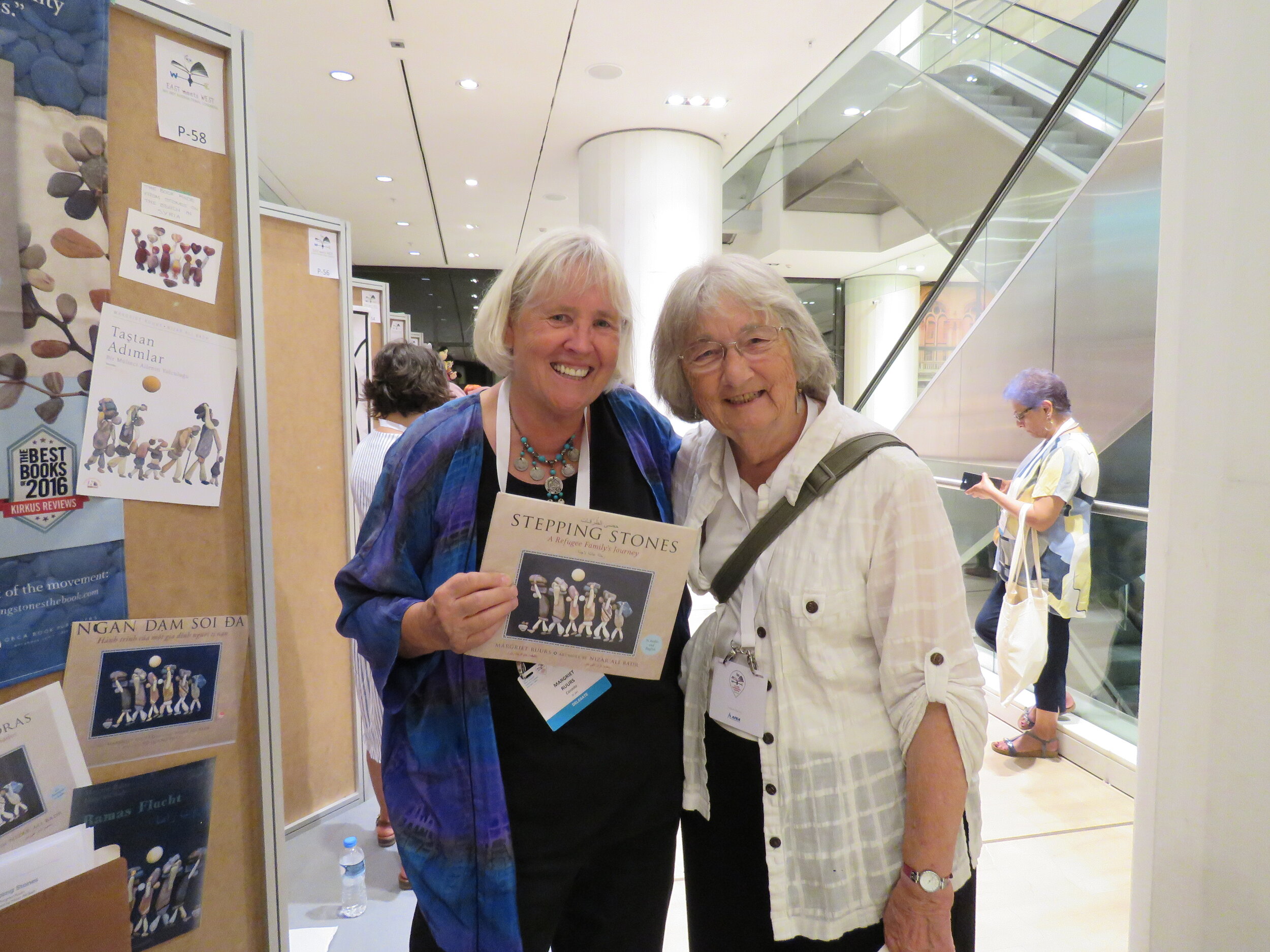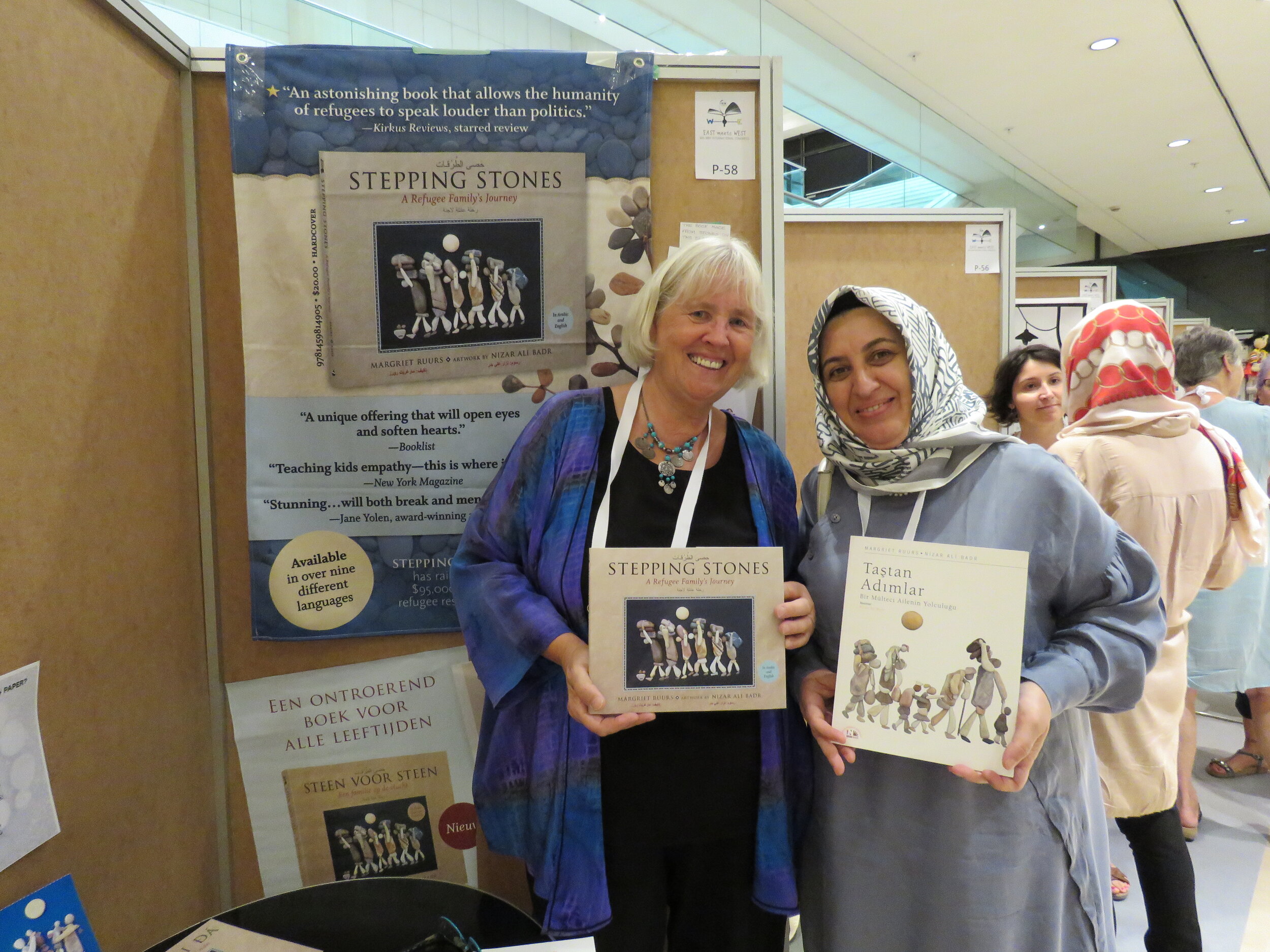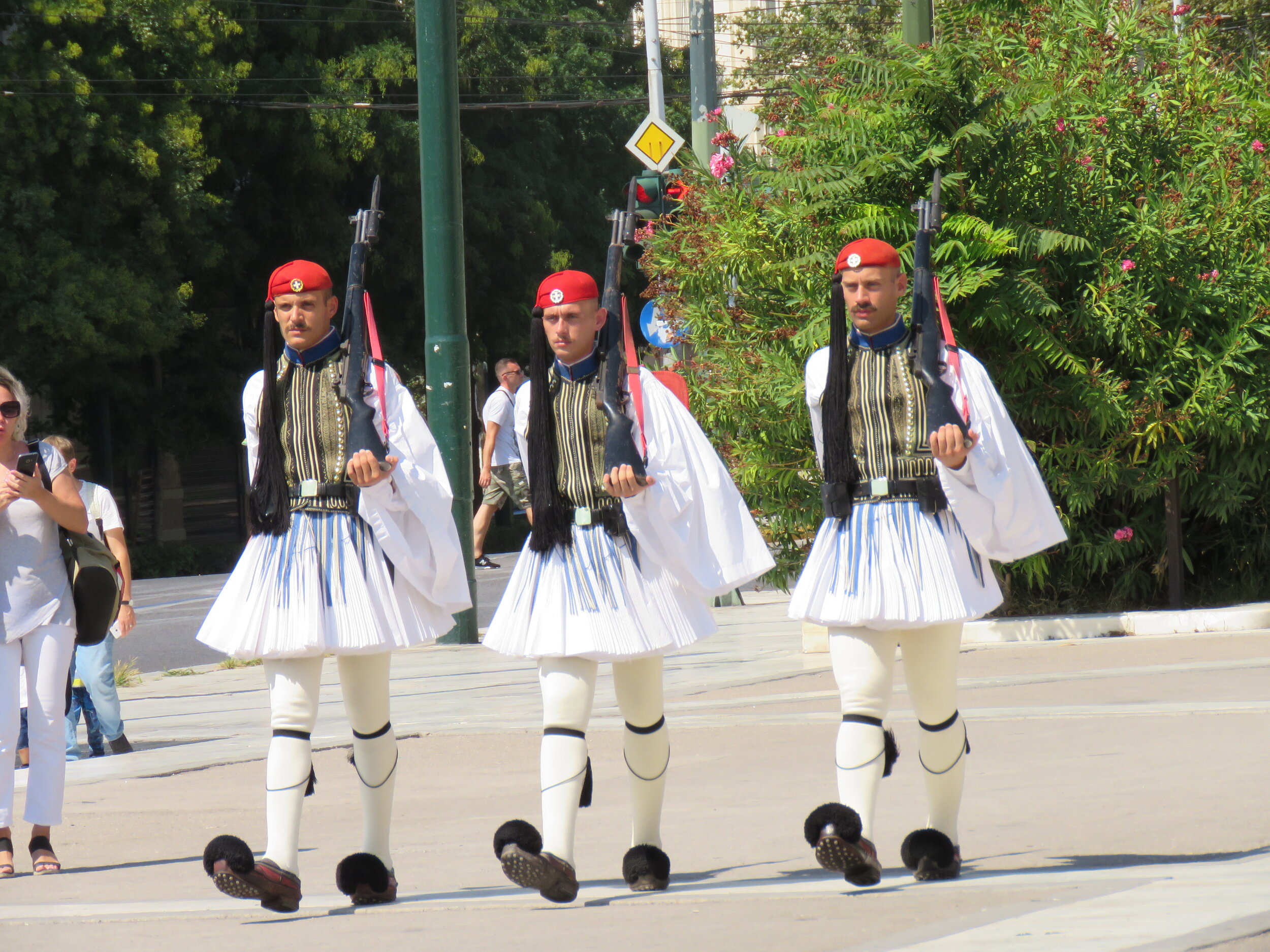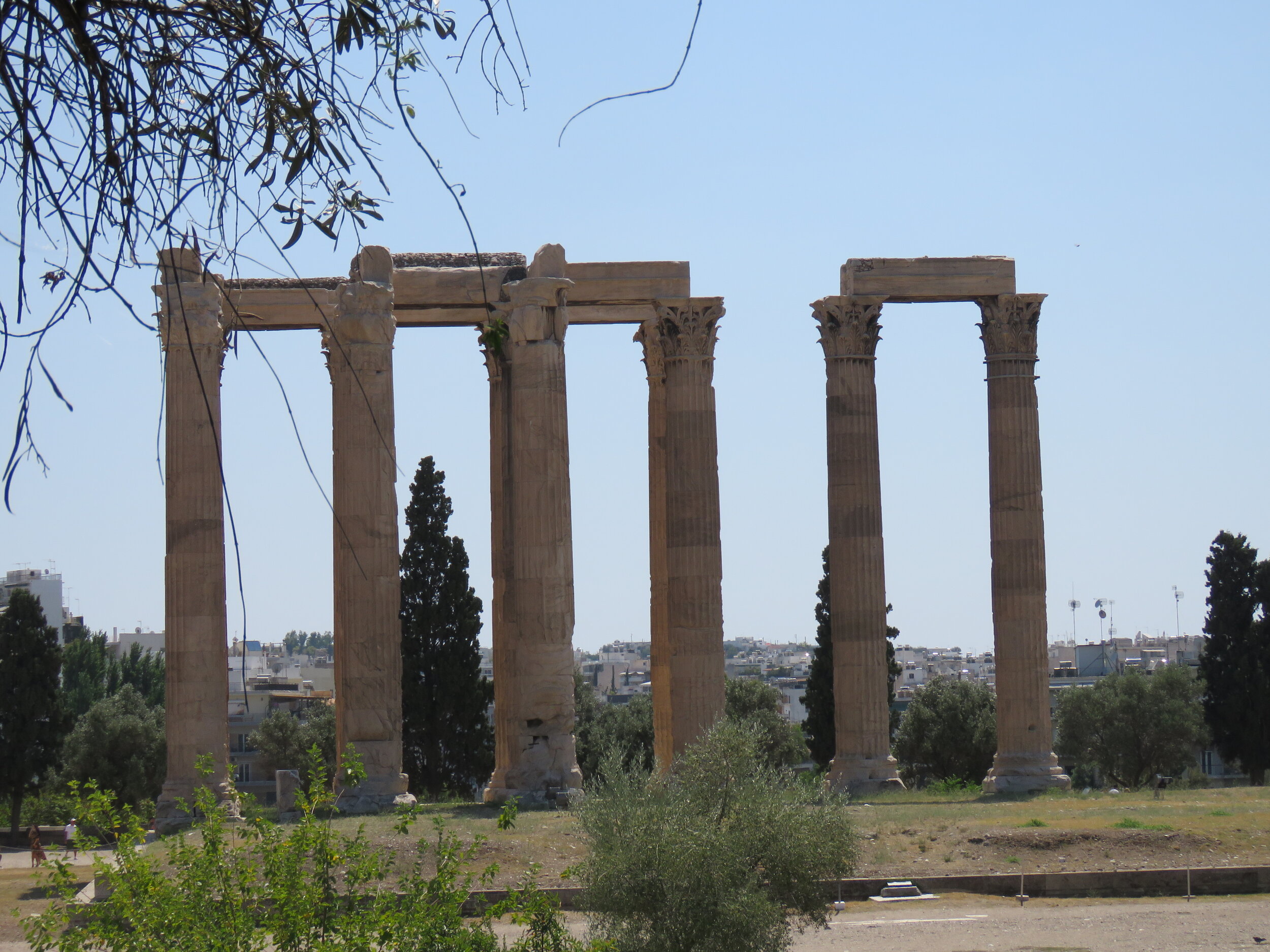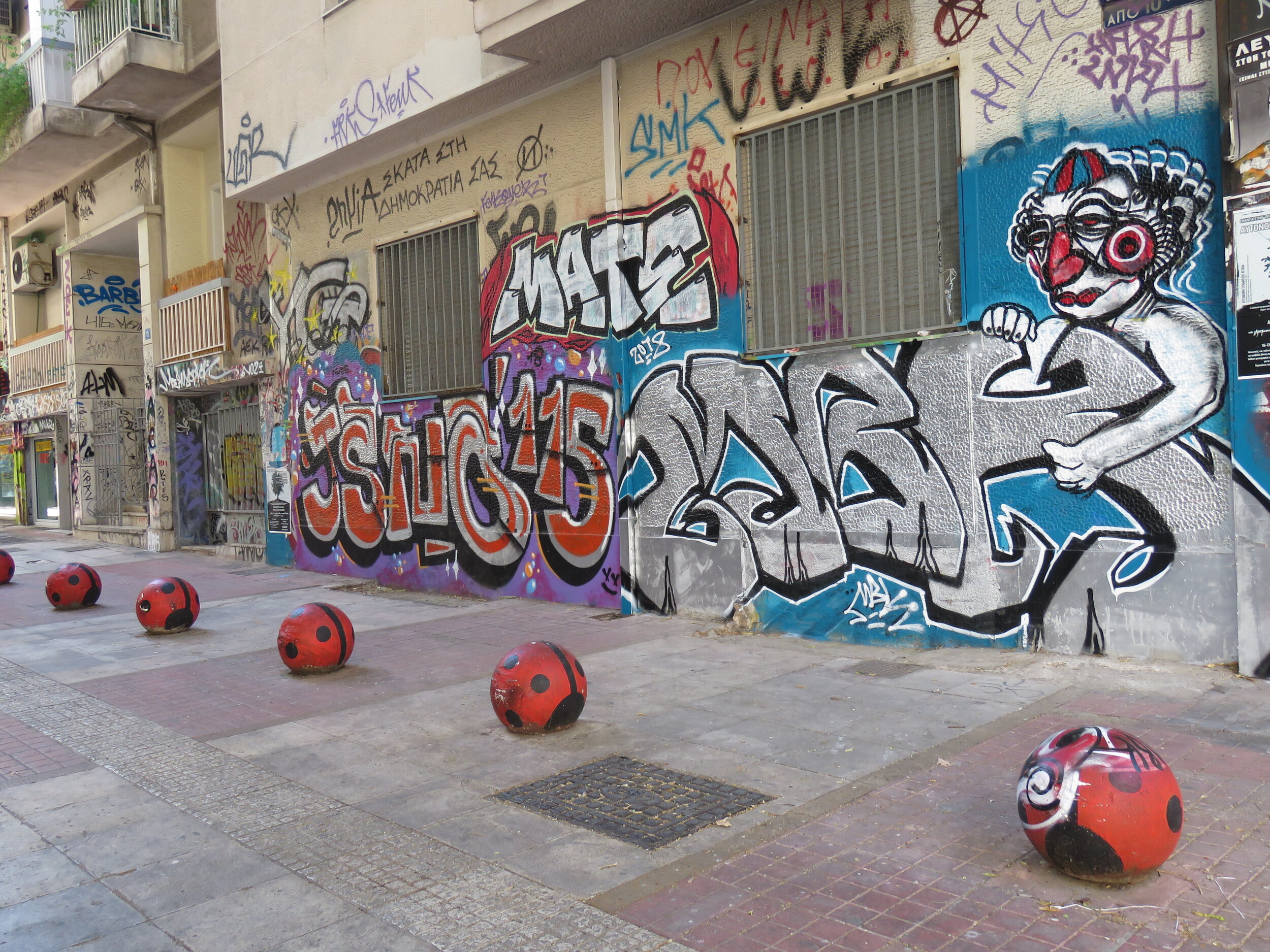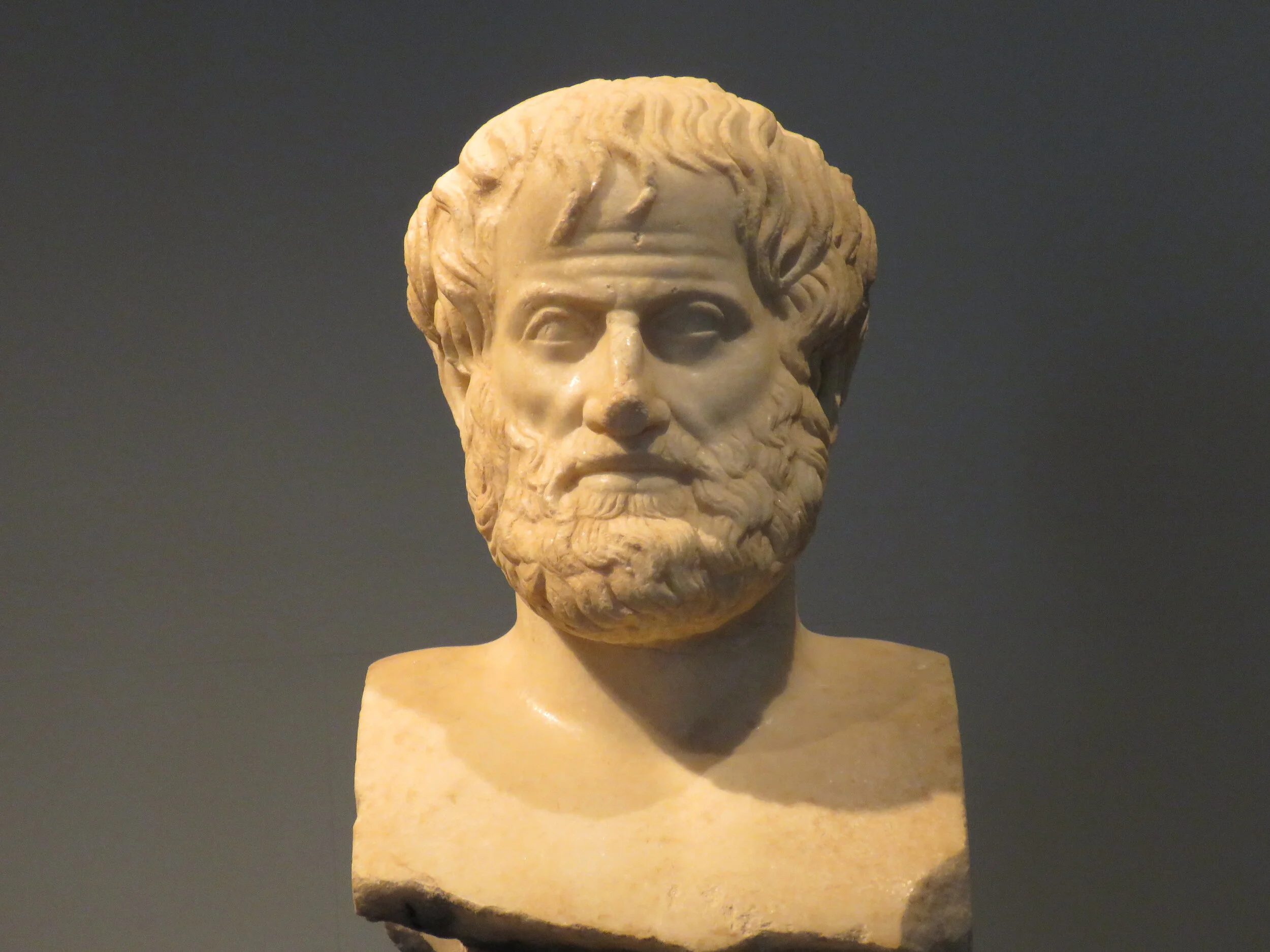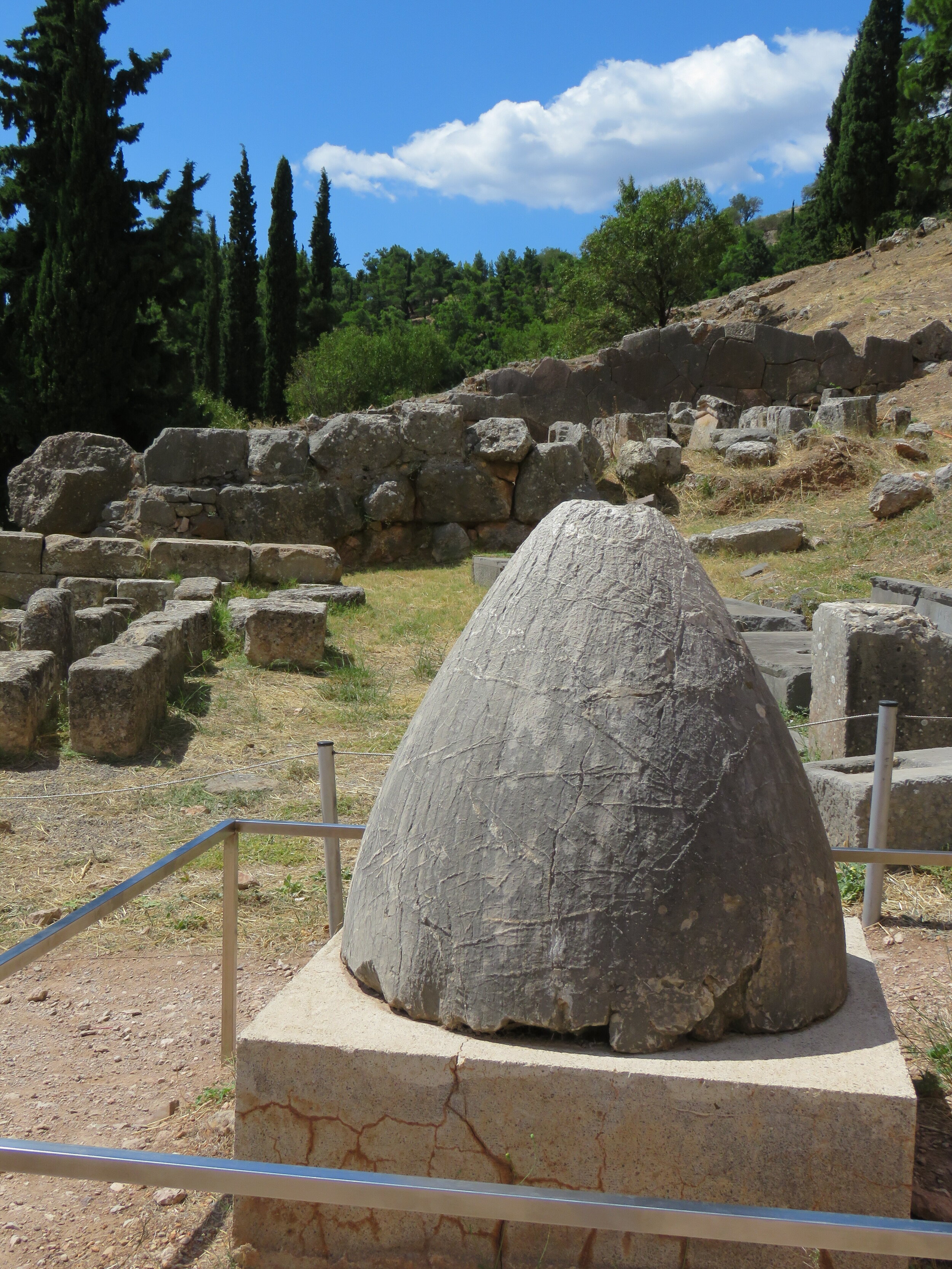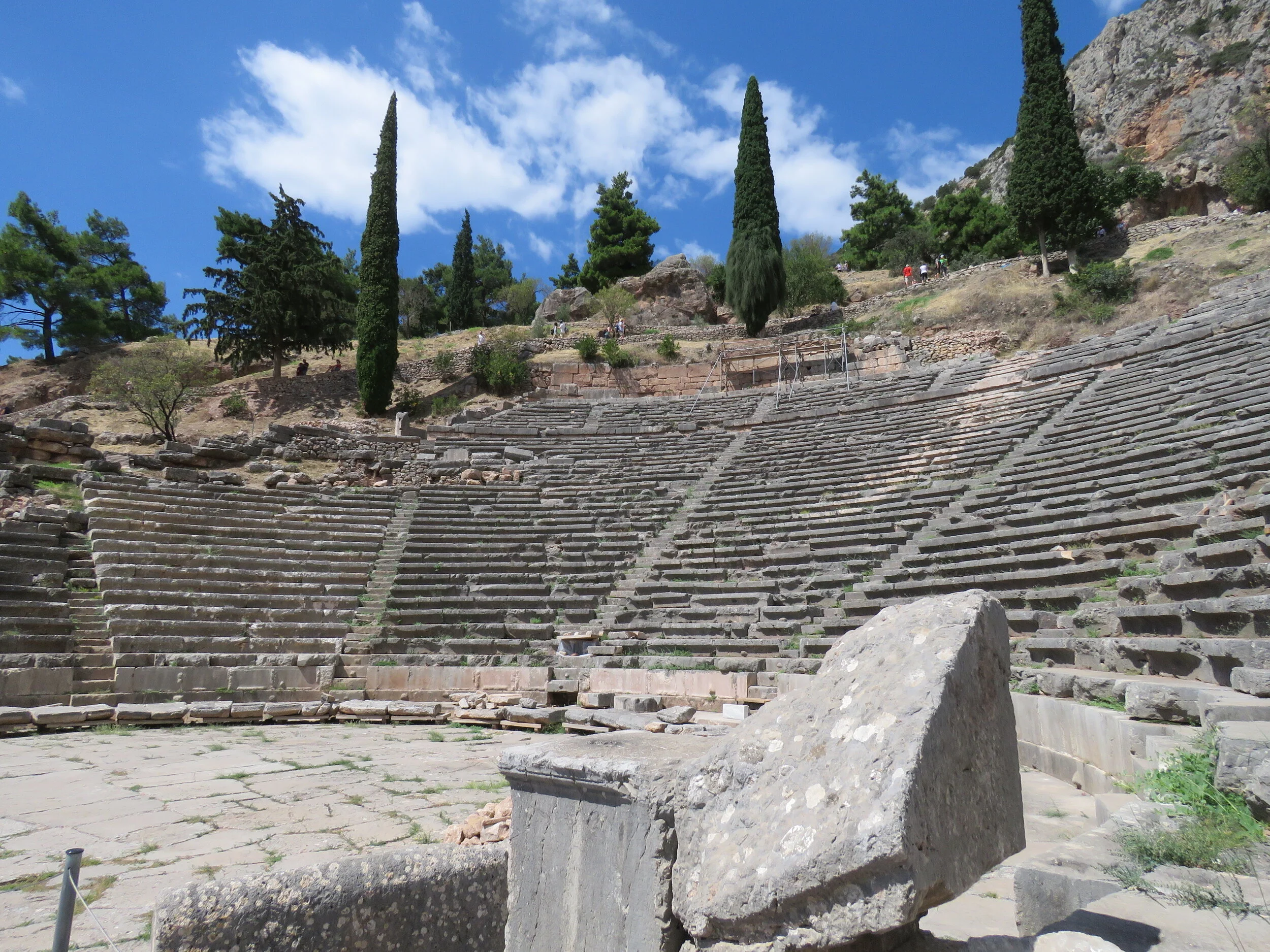Even though we are relatively experienced travellers, planning our time in Greece was daunting. In most countries or cities there are a few major attractions that you know you ought to see. But the sights of Greece are overwhelming… In a country with this kind of history, what do you want to see in a few days? And how do you get around without speaking the language or being able to decipher the signs?
The basis for planning this trip was a three day literacy conference, the IBBY World Congress, in Athens. A highlight for me here was sharing my book Stepping Stones with people from all over the world, often in their own languages, including Katherine Paterson, author of Bridge to Terabithia.
We decided to follow the conference with two full days in Athens to see the Acropolis, the Parthenon and other major sites within the city. Then we would select 3 islands for a taste of Greek island hopping.
We checked out a pile of Greece guides from the library: Lonely Planet and other books, Rick Steves’ DVD’s, fly over DVD’s that showed all the attractions. And we got even more overwhelmed… How do you decide which 3 islands to visit when there are 1,800 islands?
We decided to plan the Athens sightseeing once we got there, which turned out to be a good move. In the books, I couldn’t even find out the difference between The Acropolis and The Parthenon. Maybe that is obvious once you’ve been there, but not before. We needed Athens 101 advise.
So I started by booking an AirB&B close to the conference center. It turned out to be walking distance, easily reached by Metro from the airport, and very close to the heart of the city. For less than half the cost of a hotel room, we had 2 rooms and a kitchen in a very quiet apartment building. Next door was a lovely taverna where we sat outside on the balcony under the grape leafs to enjoy wine, Greek salad and freshly grilled chicken for 11 euros.
We soon learned that the Metro is easy to use: you buy a 90 minute ticket for E1.40 and clear maps show you how to reach your destination, from the airport to the port of Piraeus and many stops in between. Two stops from “our” Metro station was the Acropolis and the old city part called Plakka. As with all of our travels, we don’t pretend to know a place after one visit, but we do like to share our experiences with you.
The Metro is fast, efficient and cheap. The ticket machines have buttons for many different languages that talk you through the process. But beware: pick-pockets hang out in the Metro. A friend from Canada had his passport and wallet stolen on his first short ride!
To get a better idea of the attractions and their locations, we bought a two day pass for Athen’s Hop-On Bus. For 14 euros we could ride unlimited and get guided walking tours. First we took the bus and simply stayed on it for the entire two hours it took to drive its loop around the city. Map in hand, that gave us a clear idea of what was where and what we wanted to see.
Then we strolled all over the myriad of cobblestone alleys that is old Plakka, enjoyed lunch on a shaded green square (it was 36º each day in September!) and watched the changing of the guard at the Government Building.
We didn’t realize until later that we were very lucky to see this on a Sunday: the guards wear their traditional Greek outfits with white skirts only on Sunday.
We walked through the National Gardens and visited the stadium where the first of the modern Olympics were held in 1896.
Olympic Stadium
The next morning we left our apartment early. Rather than take the Metro we took a taxi which dropped us off at the path that leads up to the Acropolis for 4.50 euro. Taxis are cheap in Athens, and plentiful. Most drivers speak English. They have to use their meters and will give you a receipt.
In the cool of the morning we set off to walk the slopes of the Acropolis. You need to buy a ticket to do so. The 20 euro ticket was the most expensive we paid for any admission in Greece but also contributes to the mind blowing renovations of this thousands years’ old attraction. We learned that The Parthenon is the iconic rectangle of pillars on top of the mountain. The entire site, including smaller temples and what used to be a city, is referred to as the Acropolis.
Going early in the morning helped to not have crowds in our photos. We walked all the way around the top of the mountain and enjoyed reading the interpretive signs. We were back down by 11 AM and then went to the modern, air conditioned Acropolis Museum. This houses many of the original statues and tableaus that were removed from the Parthenon and are being renovated. Gorgeous museum with great views of the real site. Entrance fee is 5 euros. If you go later in the day, it is a good idea to buy your ticket online to avoid wasting time by standing in a long queue.
We tried to visit the National Library, but unfortunately it was closed due to a move. When visiting Athens, be sure to wear comfortable, flat shoes. You’ll do lots of walking, up and down hills, and the sidewalks are often broken and uneven. They are also very slippery because much of it is slabs of marble or smooth tiles.
Graffiti or art?
The Greek word graphein means "to scratch, draw, write”. Wall writing is found in many ancient places, but the habit was especially popular among the Romans. No wonder then that Athens is the capital of graffiti! I have never seen so much graffiti in any city. At times it seemed that every available square inch that can be reached from the sidewalk, is covered in paint. Often this graffiti is art - but it does seem a bit much when every wall, door, lamp post and sign is covered in swirls and letters.
Food is expensive in tourist areas like Plakka. But as soon as you venture into a regular neighbourhood where locals live, there are plenty of little supermarkets and fruit stands. You can buy amazing tomatoes, peaches, nectarines and grapes. And of course Greek yogurt and cheese makes the best simple, affordable lunch.
One of my favourite nights was spent eating on the rooftop of a hotel and watching the sunset. Slow as molasses, it turned the Parthenon from yellow to orange to pale beige. Then we watched as, slowly, the lights came on and the ancient temple towered over the city in orange and green light.
The following morning we got up at 5 AM for the booked ferry ride to our first island: Mykonos. We had carefully researched and selected three Greek Islands, based on geography: they had to be near Athene because of our limited time. We watched travel shows to find a variety of size and landscape. So, as arranged with our AirBnB hosts, we left the key on the table and pulled the door locked behind us. We stepped into the early dawn alley and walked, with our luggage, to a hotel around the corner from where we hailed a taxi to take us to Piraeus, the busy harbour of Athens.
“No ferries!” announced the taxi driver, “National strike!” I had heard rumours of a one day strike on Monday but this was Tuesday. Surely our ferry would take us to the island? But no, inside the hotel our fears were confirmed. So if the ferries don’t go, you can’t reach the hotel you booked. And thousands of other tourists can’t leave so hotel rooms will be at a premium. What to do? In cases like this I find that the ‘Serenity Poem’ always works: ‘Grant me the serenity to accept the things I cannot change.’ Or, in the words of a Greek guide we met later: “things ghahppen that will ghahppen”.
First we decided to ensure that we had a place to sleep in Athens for the next two nights and booked a hotel via Orbitz. No problem. We take a taxi there, leave our luggage (because it’s only 8 AM by now, too early to check in), use their wifi and walk to the travel agency through whom we had booked our Greek ferries. Thank goodness I had decided that booking it myself was too complicated. We always book everything ourselves but this time we are grateful we didn’t. AFEA Travel was amazing. They wasted no time in cancelling our first ferry ticket. They contacted our hotel in Mykonos to confirm we couldn’t make it. Then re-booked a ferry for a few days later from Athens to our next island: Naxos. And then, since we had a whole extra day, they booked us a full day excursion to Delphi. I wonder if the Oracle of Delphi could have predicted that we would show up, unplanned.
The ‘navel’ of the earth.
Delphi, the place of oracles and miracles, is the 'navel' of the earth. On the way to Delphi, our guide tells wonderful stories about battles with giants and cyclops, about gods and their confusing offspring, one of them marrying his own mother. Delphi is a two hour drive north of Athens on the mainland, in the mountains and was believed to be the navel of the flat earth. We drive through green fields, sparse forests and picturesque villages.
Delphi was a bustling place about 2,500 years ago. The original artifacts that have been found around the remaining ruins are now housed in a nearby museum. The marble statues, gold decorations and bronze castings are impressive and represent the humans who lived and worked here so many years ago.
The Oracle was fascinating. Apollo ruled here as god and the female oracle was believed to be his direct connection to the people. I find it much better to buy into this belief than to think of the more realistic alternative: the woman selected to be the voice of the gods, was kept high on methane and chewed intoxicating leafs. Her incoherent mumblings were interpreted by three poets who tried to relay them as sensible, poetic lines.
Really? The future of the world was determined by a woman who was stoned and by three men who liked words?! But despited being high, the Oracle was apparently able to predict future events. She was consulted, and proven to be correct, by many travellers from far away. The way she predicted what would happen, make it sounds like Delphi was a kind of CNN or BBC headquarters of the ancient world. However, they had a kind of a blanket statement that meant ‘use these predictions at your own risk’ - whatever the Oracle told you, you had to use your own common sense to interpret it. Sounds like our social media, doesn’t it? One god was told he would destroy a mighty land. He did, but hadn’t realized it was his own land.
This is where the Oracle spoke.
No matter how you look at it, the Oracle of Delphi is an impressive part of the history of mankind. What I find particularly fascinating, having traveled to many interesting places, is that all civilizations throughout history, in far flung places, seem to have come up with very similar stories. The cave paintings of Australia’s aboriginal people, the stories of the Aztec, those of the Haida, the carvings at Angkor Wat, all resemble similar stories. Here in Delphi we learned about a Greek myth (from about 900 BC!!) in which rain washed away mankind except for two whose task it was to repopulate the world after their boat stranded on a mountain top and the rains receded.
Perhaps the saddest fact I learned was that Aesop lived here. He was a slave but earned his freedom with his amazing storytelling powers. We saw names of people carved in marble, listing those who obtained their freedom, apparently his name was recorded here, too. Aesop happily went on telling stories as a free man. Until the Greeks decided they did not like the tales he told and pushed him to his death from a mountain top. So much for freedom of speech and censorship.
In a next Greece blog, we’ll take you to some of the Greek islands. If the ferries are not on strike.
Resources:
The Acropolis: https://www.theacropolismuseum.gr/en
Hop on, Hop Off bus: https://www.hop-on-hop-off-bus.com/athens/combo-hop-on-hop-off-classic-tour-of-athens_29715
AFEA Travel: www.afea.gr
Our favourite BOOKS about Greece.



